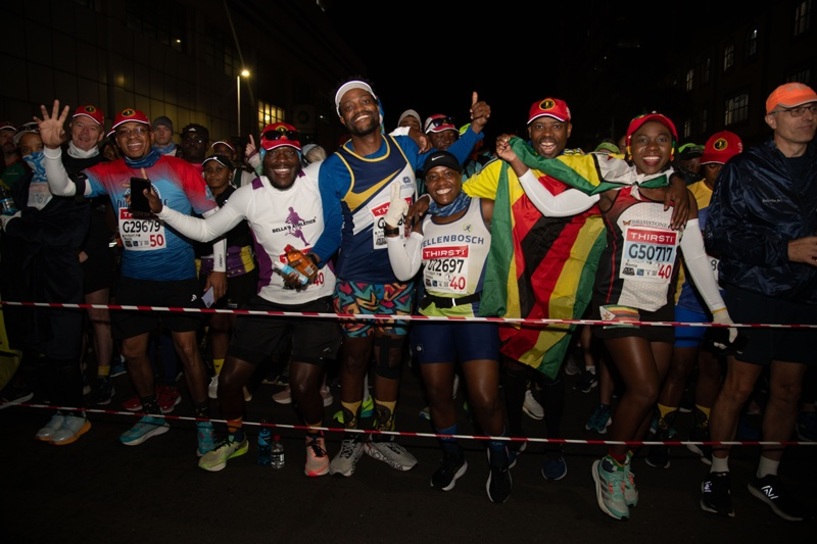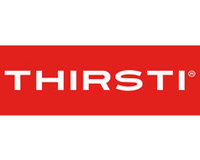
FAQ ON SEEDINGS, STARTS AND SAFETY
Now that the seedings for each qualifying athlete in the 2025 Comrades Marathon have been announced, we know you may still have some questions about how it will all work with the two start groups and seeding batches, so here’s a list of frequently asked questions that we think will help you better understand the process.
How will the Start of the race work?
Group 1, with Batches A to J, will start at 5:45am, and Group 2, with Batches K to S, will start 15 minutes later at 6:00am.
Why the change from a single start, as used for the past 97 years at Comrades?
The introduction of two starting groups is designed to improve the runners’ safety, and improve the runners’ experience. This stems from the numerous safety concerns raised by runners regarding the start of the 2023 Down Run (which ‘only’ had around 16,000 starters), such as batch-jumping, runners climbing over the fencing, pushing and shoving inside the batches, and the very real risk of runners being tripped, trampled and/or crushed.
The 2025 race will have the largest ever field of Down Run starters in the history of the Comrades Marathon, expected to be around the 22,000 mark, and the responsibility of the organisers is to ensure that the safety of all participants is a top priority. Splitting the start into two groups will assist in addressing those safety issues experienced in 2023, whilst still retaining all of the Comrades traditions, such as gun-to-mat timing, the various medal cut-offs, and the final 12-hour cut-off. The split start will also allow the slower runners in Group 2 to cross the start line substantially sooner than in previous years, thus giving them a better chance of posting a good time, or of making that final cut-off. With all this in mind, 12,000 is calculated to be the maximum safe number to enable reasonable running at the tightest parts of the route, and will provide a much better runner experience for all runners.
Why the 5:45am and 6:00am starts, instead of the traditional 5:30am start?
This decision is purely related to safety. On race day, civil twilight in the Pietermaritzburg area will be 6:20am, and sunrise is at 6:50am. There are no streetlights on the Polly Shortts descent, and the road is steep and has several twists, is uneven in places, narrow in width, and has some speed humps. By the time the majority of Group 1 runners get to the top of Polly Shortts, it will be twilight, which will provide safer running conditions, and will also allow medical personnel to see any person requiring assistance on that narrow part of the route. It will be official daylight for virtually all Group 2 runners, which is where the major number of runners per minute are expected.
In short, the choice was between running on Polly Shortts in darkness with a congested field, or running the final 10km of the race into Durban in darkness i.e. from Westwood/45th Cutting to the Finish. The fact is that much of those final 10km in Durban are well lit by streetlights, the roads are wider and smoother, and there will be fewer runners per minute over that section. (Extra lighting will be provided at those spots in the last 10km that are not as well lit.)
What are the expected benefits of the two-start system?
This plan will result in a much-improved runner experience than recent years:
• Reduced crowding at the start.
• Runners will have more space around them and therefore be able to run their own race rather than being dictated to by overcrowded roads;
• The last runner in each start will take significantly less time to cross the start line, compared to previous single starts of a similar size, thus reducing the pressure on them to make cut-off times.
• The Green Number, Yellow Number and Charity runners now have a totally open road ahead of them when Start Group 2 commences.
• Allows for better passage and reduced access time for any medical situation that may arise on the road, which has been a potential risk in previous years.
• Better flow and service through refreshment stations.
• Less crowded roads, making it possible for every runner to run faster times.
• Fewer runners per minute on the route means greater ability for runners to be spotted by their supporters.
How will the Start Groups and Batch Seedings be identified?
Group 1 and Group 2 runners will have a different colour block on their race numbers: Group 1 is the Purple Group, and Group 2 is the Orange Group. Runners within each Start Group have also been allocated to a specific seeding batch, which is denoted by a letter in front of the runner’s race number, from Batch A to Batch S, but note that there are no batches I or O, to avoid confusion between numbers and letters on race day.
How do the Seeding Batches line up?
Batches A to J will be in Start Group 1, and Batches K to S in Group 2. Runners must line up in their allocated Start Group and Batch, and no ‘jumping’ up to a higher start or batch will be allowed. Each batch will hold around 1500 runners, and all batches will start the race when their gun is fired for their Start Group. The starting times for the two groups are 5:45am for Group 1, and 6:00am for Group 2.
In Group 1, the elite athletes and contenders for the various prizes and trophies will start in Batch A, followed by Batches B to J, with the fastest qualifiers in Batch B and moving down to the slowest qualifiers of this Start Group in Batch J. There will be approximately 12,000 runners in Group 1.
In Group 2, a special Batch K will be positioned at the front of the group for Louis Massyn (race number 403) and a small group of his running friends, as he attempts to earn an unprecedented 50th Comrades finisher’s medal. They will be followed by Batch L, which is for those runners with 10 or more Comrades medals (Green Numbers), those going for their 10th finish (Yellow Numbers) and those running as part of the CMA’s Race4Charity initiative, if their qualifying time is slower than 4:30 (or the equivalent over a greater distance). (Note: Those Greens, Yellows and charity runners with qualifying times faster than 4:30 will line up according to their qualifying times as per the Standard Seeding Rules explained earlier.) After that will come Batches M to S, and in total, Group 2 will have around 10,000 runners.
How was seeding calculated
The allocation of Start groups is based on around 55% of runners being allocated to Start Group 1 and 45% to Start Group 2, and runners were allocated to groups and batches based on the qualifying time that they submitted for a standard marathon (or equivalent over a longer distance race). As a guideline, runners with a qualification time under four hours (4:00) were allocated to Group 1, and those with a qualification over 4 hours 30 minutes (4:30) were allocated to Group 2 Start. Then, runners with a qualifying time from four hours (4:00) to four hours 30 minutes (4:30) were divided between the two groups, based on improving safety and flow of runners throughout the start and through to Tumble Inn, around the 12km mark.
Note: This may result in some runners lining up near the front of Group 2 seeing other runners with slightly slower qualifying times ahead of them, lining up at the back of Group 1.This is (a) purely designed for optimal flow of runners at the two starts, and is being done very much with safety in mind, and (b) this will actually benefit those slightly faster runners, who will be able to get up to racing speed sooner after starting with Group 2.
Am I allowed to change my start group or batch?
Runners will only be allowed to line up in their allocated start group and batch, or a batch further back within their allocated start group, if they so choose – for example, if two clubmates or a couple would like to run together. However, moving up to a higher group or batch will not be allowed.
Runners will only be allowed to move back from Group 1 to Group 2 if they request in writing to info@comrades.com that they would like to move, specifying which Group 2 batch they would like to move to. No Group 1 runners may join Batch K, and only Green Number, Yellow Number and Race4Charity runners from Group 1 may apply to join Batch L. All other applicants asking to move must select a batch from M to S. Note, however, that limits will to be applied to the size of each batch, in order to ensure the safety of all runners.
The deadline for submission of written requests to move from Group 1 to Group 2 is 17h00 (SA time) on Monday 26 May 2025, and a successful application will cost the runner R200 for administrative and printing costs. If approved, the CMA will reprint those runners’ race numbers in advance, and at registration in either Durban or Pietermaritzburg, these runners must collect their current number as normal, then come to the Information Counter to also collect their new number. The fee of R200 must be paid at the Information Counter, and only card payments will be accepted.
Important: Runners allocated to Group 2 are urged not to try ‘jump’ the start by moving into Group 1 on race day, as the timing system will pick you up, and you may face disqualification after the race.
Are there added safety plans in place for the Start?
Yes. Runners in Group 2 will be brought up to the Start area, in a strictly controlled process, after the last Group 1 runner has crossed the Start line and left the Start area. There will be a substantially increased number of additional security officers, marshals and technical officials, additional mobile floodlights, and additional crowd control fencing in place, to ensure safe crowd control of the runners, as well as to ensure the smooth movement of runners for the two starts.
Will the faster runners in Group 2 catch runners from Group 1?
Most runners in Group 1 are faster than the runners in Group 2, and thus may not be ‘caught’ on the day, but runners in Group 1 could have a ‘bad day in the office,’ go through a bad patch during the race, or could just run slower on the day than their qualifying time, so some from Group 1 will slow down and be overtaken by Group 2 runners. Similarly, some runners in Group 2 may perform better on the day than their predicted finishing time based on their qualifying times, and they will benefit from the open road ahead to run faster. This means that there will be some overlap as the race unfolds, but this is expected to be minimal, which means more free running for all runners.
Will both groups have 12 hours to complete the race?
Absolutely. Group 1 runners (with their purple colour race number) need to finish before 5:45pm, while Group 2 runners (with their orange race numbers) need to finish before the final cut-off gun is fired at 6:00pm. Both groups will have 12 hours in which to complete the race.
Are these changes to the Comrades Start permanent?
Following this 2025 Comrades, careful examination of the race times and statistics, as well as runners’ feedback, will be done to determine whether these changes should be retained, and whether they will allow the size of the field to be safely increased for the Down Run in 2027, which will mark the 100th edition of the race, and which is expected to have an even bigger field.
Should you have any questions which we have not answered, please share them with us via email at info@comrades.com












